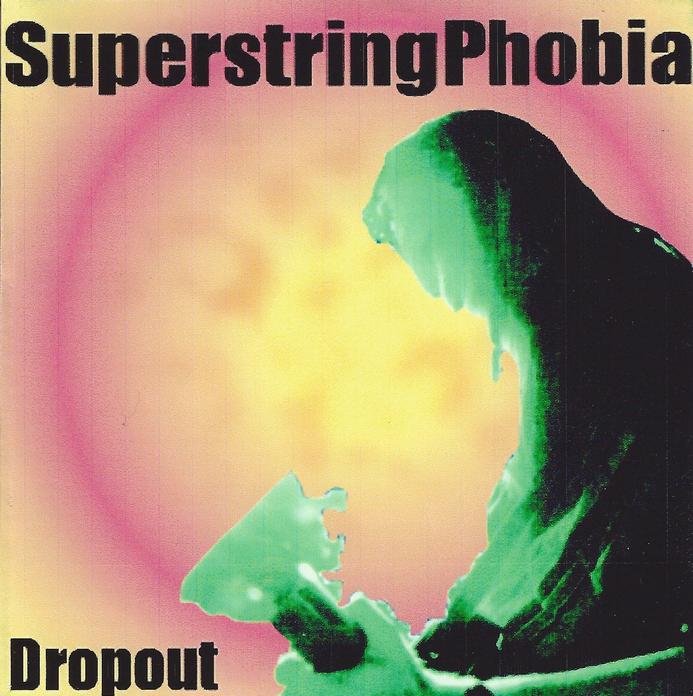 When someone chooses to name their band/solo project after a fear “of wanting to explain all of the particles and fundamental forces of nature in one theory by modelling them as vibrations of tiny supersymmetric strings” (see Wikipedia for further details), you can imagine Dropout being one of those albums that acts as a soundtrack for researching a Masters in Astrophysics. However, fear not; you don’t have to be a rocket scientist to get absorbed by the pulsing beats, hot electronics and razor sharp guitar lines of Superstring Phobia, the brainchild of Leeds-based David Sanderson, who plays and programmes every sound on the album.
When someone chooses to name their band/solo project after a fear “of wanting to explain all of the particles and fundamental forces of nature in one theory by modelling them as vibrations of tiny supersymmetric strings” (see Wikipedia for further details), you can imagine Dropout being one of those albums that acts as a soundtrack for researching a Masters in Astrophysics. However, fear not; you don’t have to be a rocket scientist to get absorbed by the pulsing beats, hot electronics and razor sharp guitar lines of Superstring Phobia, the brainchild of Leeds-based David Sanderson, who plays and programmes every sound on the album.
Dropout comes across as an intriguing mash-up of Ozrics-style spacefunk, krautrock, and techno, as opposed to the more brain-thumping and bass-heavy school of traditional spacerock (yes, that is Hawkwind I am talking about!). The album opens with Lunar Descent, which features a jarring beat that brings to mind Kraftwerk’s Musik Non-Stop for a few seconds before a series of processed guitars swoop down from above. After a brief Steve Hillage-style lead break, the layers of electronics return, weaving in and out of the guitar lines to form complex layers of sound that could be a highly funked-up version of Throbbing Gristle. The title track, with its funky intro and underwater electronics owes an obvious debt to Ozric Tentacles (think Sploosh!), and is certainly none the worse for it. This is definitely spacerock that would not be out of place on the dancefloor. With that in mind, the following Haunted Dancefloor is three and a half minutes of synthesized electro-beats, almost closer to dubstep than spacerock. The way the different layers of electronics fit together in such cosmic patterns is quite amazing. Highly processed guitars return for Funk Implant, with the jerky rhythm sounding a little like Shriekback’s Pretty Little Things, before a soaring rock guitar solo (again reminiscent of Hillage and perhaps Ed Wynne) rises above the electro soundscape. Outer Space Rock doesn’t exactly rock, but rather squeezes its insidious way into the senses like a spacier version of The Prodigy, while lightening fast guitar lines skate across the electronic beats. This is followed by the nine minute Sonic Guru, providing further variations on the guitar/synth network theme. Inside The Kaleidoscope Mind slows the pace with an off-beat rhythm that almost sounds like it is tripping backwards over itself. An epic, almost melancholic, rock guitar solo rises above the swamp of electronic noise on Psychic Stream. The album concludes with New World Orbit, a medium-paced workout of interstellar guitar and beats.
Other than the artists namechecked above, Superstring Phobia reminds me of guitar-meets-electronics bands like Space Mirrors (but without all the dark bits) and Psy Corps; it doesn’t so much rock as overwhelm you with layers of sound. All-in-all, a great album from a visionary multi-instrumentalist. Also worth a listen is his trans-Atlantic project Nebulous Amphibians with San Franciscan Jon Drukman, again in awe of Ozric Tentacles and accessed via the link below. (CLICK HERE to read the Nebulous Amphibians review we posted)
For more information visit Superstring Phobia at: http://www.facebook.com/pages/Superstring-Phobia/135604409923480
David’s work on the Nebulous Amphibians can be heard on http://soundcloud.com/nebulous-amphibians
Email David Sanderson at: info@echostun.com
Reviewed by Pat Albertson

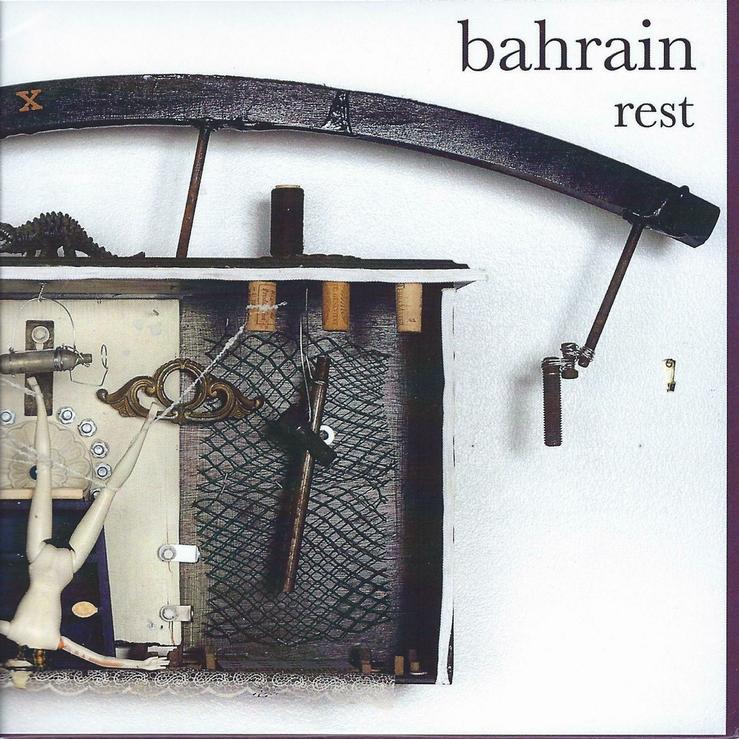 Bahrain are the Austin, Texas based quartet of D. Boone on guitars, Colleen Gugan on bass, keyboards and vocals, Mel on drums, and Scott Telles (ST 37) on bass, keyboards and vocals. The latest from the band is Rest, a 19 track set of live performances, demos, improvs and cover tunes recorded between 2000 and 2005, with some new overdubs, mixing and mastering in 2010. The group actually disbanded in 2005 but reunited for one show in 2012 to promote the release of this CD.
Bahrain are the Austin, Texas based quartet of D. Boone on guitars, Colleen Gugan on bass, keyboards and vocals, Mel on drums, and Scott Telles (ST 37) on bass, keyboards and vocals. The latest from the band is Rest, a 19 track set of live performances, demos, improvs and cover tunes recorded between 2000 and 2005, with some new overdubs, mixing and mastering in 2010. The group actually disbanded in 2005 but reunited for one show in 2012 to promote the release of this CD.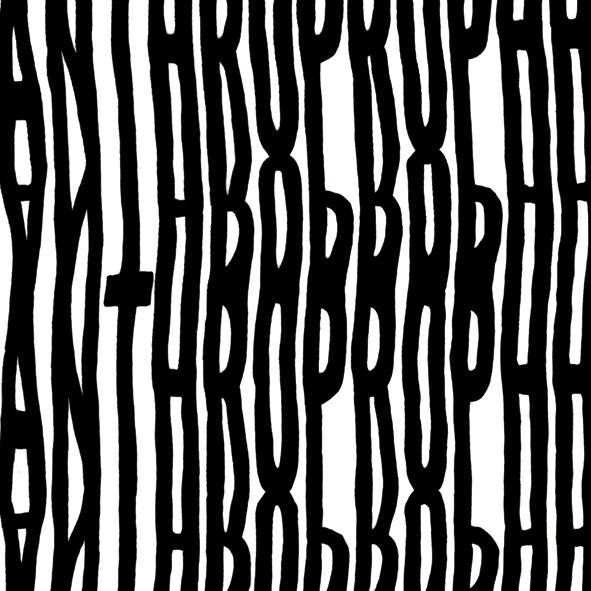 Anthroprophh is the solo project, and this is the first solo album, by The Heads guitarist and vocalist (and audio generator operator) Paul Allen. The Heads are a UK band formed in the early 90’s. Initially inspired by emerging stoner rock bands of the time like Monster Magnet, albeit with a heavier dose of noise thrown in, on later albums like 33 (2004) and Dead in the Water (2005) they began to explore longer form, more experimental rock. For his debut album (released on vinyl and as a download), Allen has taken inspiration from his own band’s later albums, but tempered it with the rhythms of Krautrock for some truly inspired, mostly instrumental psychedelic rock. Opening cut, Hermit, is a churning, LSD soaked electric voyage, from its sea of wah wah’d distortion opening, through its stormy, acidic guitar work and pounding Can-inspired rhythms to its swirling, hallucinogenic coda. These tracks aren’t as long as some of 20-minute monsters found on the above mentioned Heads LP’s, the shortest one being the solo electro-acoustic Discretion Shot (clocking in at 1:09), but their sound is focused, each piece developing its own distinct sonic snapshot, whether it be the tribal intensity of Precession, the droning space journey of Ende or the mind-altering, bad trip British garage rock meets alien landscape of We. Allen does break into longer form exploration with one track on the album though, the 16 1/2 minute Entropy. This one is a sonic buffet for kosmiche loving ears, all intense, part machine, part human rhythmic minimalism married to guitar atmospherics and bubbling, cosmic electronic noises. Allen shows supreme control over his guitar here, slowly developing the ambience, weaving it in and out of the driving tempo of the percussion. The piece ever so slowly builds in intensity over its course, as Allen subtly introduces more and more sounds, finally cutting lose on his guitar for some hypnotic, spiralling soloing only when the tension can’t take it anymore. Mesmerizingly brilliant!
Anthroprophh is the solo project, and this is the first solo album, by The Heads guitarist and vocalist (and audio generator operator) Paul Allen. The Heads are a UK band formed in the early 90’s. Initially inspired by emerging stoner rock bands of the time like Monster Magnet, albeit with a heavier dose of noise thrown in, on later albums like 33 (2004) and Dead in the Water (2005) they began to explore longer form, more experimental rock. For his debut album (released on vinyl and as a download), Allen has taken inspiration from his own band’s later albums, but tempered it with the rhythms of Krautrock for some truly inspired, mostly instrumental psychedelic rock. Opening cut, Hermit, is a churning, LSD soaked electric voyage, from its sea of wah wah’d distortion opening, through its stormy, acidic guitar work and pounding Can-inspired rhythms to its swirling, hallucinogenic coda. These tracks aren’t as long as some of 20-minute monsters found on the above mentioned Heads LP’s, the shortest one being the solo electro-acoustic Discretion Shot (clocking in at 1:09), but their sound is focused, each piece developing its own distinct sonic snapshot, whether it be the tribal intensity of Precession, the droning space journey of Ende or the mind-altering, bad trip British garage rock meets alien landscape of We. Allen does break into longer form exploration with one track on the album though, the 16 1/2 minute Entropy. This one is a sonic buffet for kosmiche loving ears, all intense, part machine, part human rhythmic minimalism married to guitar atmospherics and bubbling, cosmic electronic noises. Allen shows supreme control over his guitar here, slowly developing the ambience, weaving it in and out of the driving tempo of the percussion. The piece ever so slowly builds in intensity over its course, as Allen subtly introduces more and more sounds, finally cutting lose on his guitar for some hypnotic, spiralling soloing only when the tension can’t take it anymore. Mesmerizingly brilliant!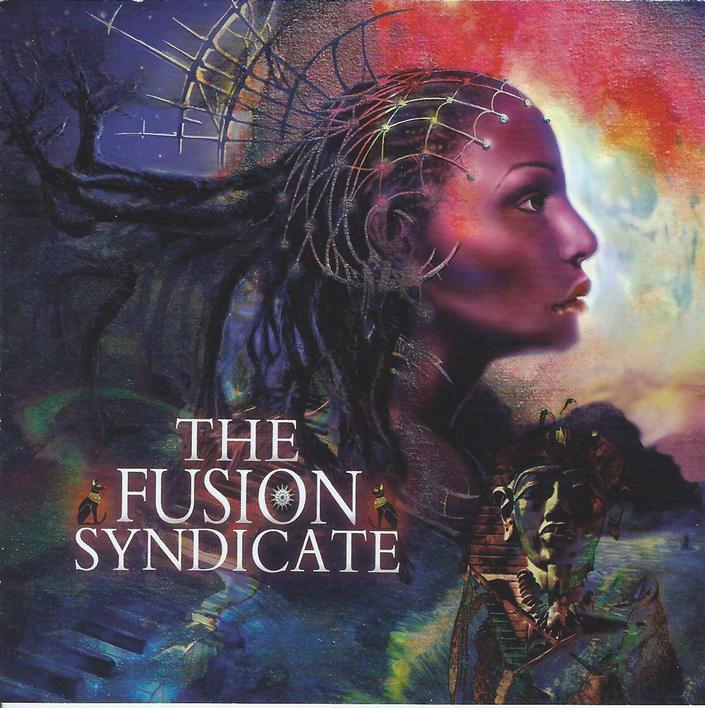 Multi-instrumentalist and producer Billy Sherwood must have a pretty impressive Christmas card list, if the guest stars on this album are anything to go by. Earlier in the year, he pulled together a dream lineup of talent from the likes of Yes, King Crimson and Gong for a project called The Prog Collective. Just a few months later, the cast list is even more staggering on The Fusion Syndicate, the second of a one-two riff on beloved (or derided, depending on which side of the fence you are on) musical genres from the early ’70’s. Name any significant fusion or progressive band or artist from that era, and the chances are that someone associated with them will be on this album. From Yes, Mahavishnu Orchestra, King Crimson, Genesis, Hawkwind, Gong, Weather Report, Soft Machine and Brand X, to sidemen for Frank Zappa, Chick Corea, John McLaughlin and Allan Holdsworth (not to mention … ahem … Billy Idol), all the boxes are well and truly ticked. Each guest appears on one track only with Sherwood acting as the glue that binds it all together, conceptualizing, writing, producing and playing all the instruments (keyboards, guitars, drums) not handled by the guest list on any particular track.
Multi-instrumentalist and producer Billy Sherwood must have a pretty impressive Christmas card list, if the guest stars on this album are anything to go by. Earlier in the year, he pulled together a dream lineup of talent from the likes of Yes, King Crimson and Gong for a project called The Prog Collective. Just a few months later, the cast list is even more staggering on The Fusion Syndicate, the second of a one-two riff on beloved (or derided, depending on which side of the fence you are on) musical genres from the early ’70’s. Name any significant fusion or progressive band or artist from that era, and the chances are that someone associated with them will be on this album. From Yes, Mahavishnu Orchestra, King Crimson, Genesis, Hawkwind, Gong, Weather Report, Soft Machine and Brand X, to sidemen for Frank Zappa, Chick Corea, John McLaughlin and Allan Holdsworth (not to mention … ahem … Billy Idol), all the boxes are well and truly ticked. Each guest appears on one track only with Sherwood acting as the glue that binds it all together, conceptualizing, writing, producing and playing all the instruments (keyboards, guitars, drums) not handled by the guest list on any particular track.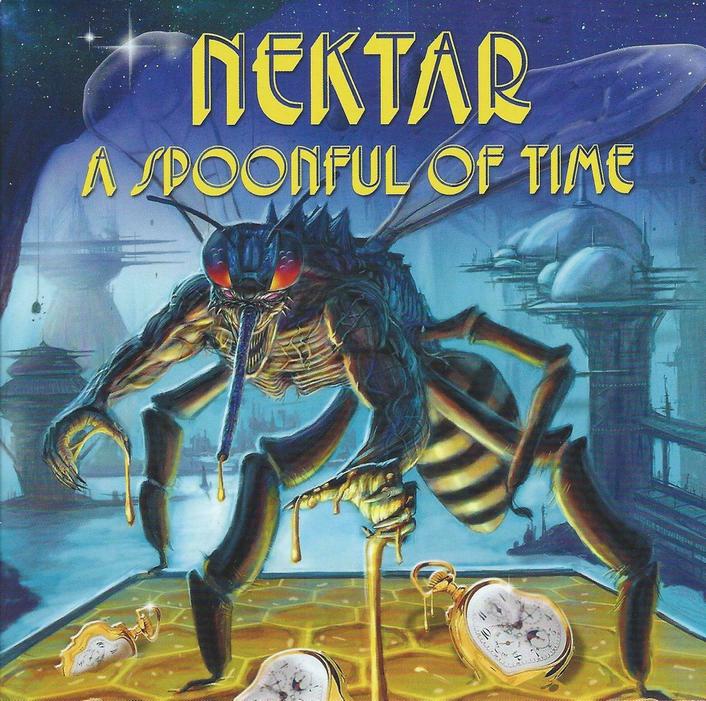 A bit of background information is called for prior to reviewing this album. Purple Pyramid is the prgressive/psychedelic division of Cleopatra Records, the far-out label that brought us some stunning spacerock back in the 1990’s, including re-igniting the careers of ex-Hawkwinders Nik Turner and Simon House, while also releasing a range of covers albums (Pink Floyd, King Crimson, Brian Eno, Hawkwind) of variable quality. Billy Sherwood, multi-instrumentalist producer and associate of the 1990’s Yes, also has a long history of organizing tribute albums – XYZ – A Tribute To Rush, Return To The Dark Side Of The Moon, Dragon Attack – A Tribute To Queen – using a stellar cast of musicians from such bands as Yes, Deep Purple, Hawkwind, Gong and King Crimson. Nektar, on the other hand, just have a long history full-stop (going back to their first release Journey To The Centre Of The Eye in 1971), plus a revolving door of musicians, none of whom can claim the distinction of having played on every single Nektar album. The combining factors of updating progressive rock glories, cover versions and high profile guest stars are key to the release of A Spoonful Of Time. Although released under the Nektar brand name, and featuring long time band members Roye Albrighton (vocals and guitar) and Ron Howden (drums) – the contributions of current the Nektar keyboard player being hard to gauge behind a host of keyboard-toting guest artists – the very existence of A Spoonful Of Time owes as much to Sherwood (who mixed the album and plays on almost all the tracks) and Cleopatra as it does to Nektar. The appearance of a covers collection this late in a band’s career hints at burned out creativity, but at least provides some new music beyond yet another live album or collection of material from their own archives (to be fair, Nektar have got a brand new studio album – Time Machine – in the works for 2013, which would fly in the face of burnout accusations).
A bit of background information is called for prior to reviewing this album. Purple Pyramid is the prgressive/psychedelic division of Cleopatra Records, the far-out label that brought us some stunning spacerock back in the 1990’s, including re-igniting the careers of ex-Hawkwinders Nik Turner and Simon House, while also releasing a range of covers albums (Pink Floyd, King Crimson, Brian Eno, Hawkwind) of variable quality. Billy Sherwood, multi-instrumentalist producer and associate of the 1990’s Yes, also has a long history of organizing tribute albums – XYZ – A Tribute To Rush, Return To The Dark Side Of The Moon, Dragon Attack – A Tribute To Queen – using a stellar cast of musicians from such bands as Yes, Deep Purple, Hawkwind, Gong and King Crimson. Nektar, on the other hand, just have a long history full-stop (going back to their first release Journey To The Centre Of The Eye in 1971), plus a revolving door of musicians, none of whom can claim the distinction of having played on every single Nektar album. The combining factors of updating progressive rock glories, cover versions and high profile guest stars are key to the release of A Spoonful Of Time. Although released under the Nektar brand name, and featuring long time band members Roye Albrighton (vocals and guitar) and Ron Howden (drums) – the contributions of current the Nektar keyboard player being hard to gauge behind a host of keyboard-toting guest artists – the very existence of A Spoonful Of Time owes as much to Sherwood (who mixed the album and plays on almost all the tracks) and Cleopatra as it does to Nektar. The appearance of a covers collection this late in a band’s career hints at burned out creativity, but at least provides some new music beyond yet another live album or collection of material from their own archives (to be fair, Nektar have got a brand new studio album – Time Machine – in the works for 2013, which would fly in the face of burnout accusations).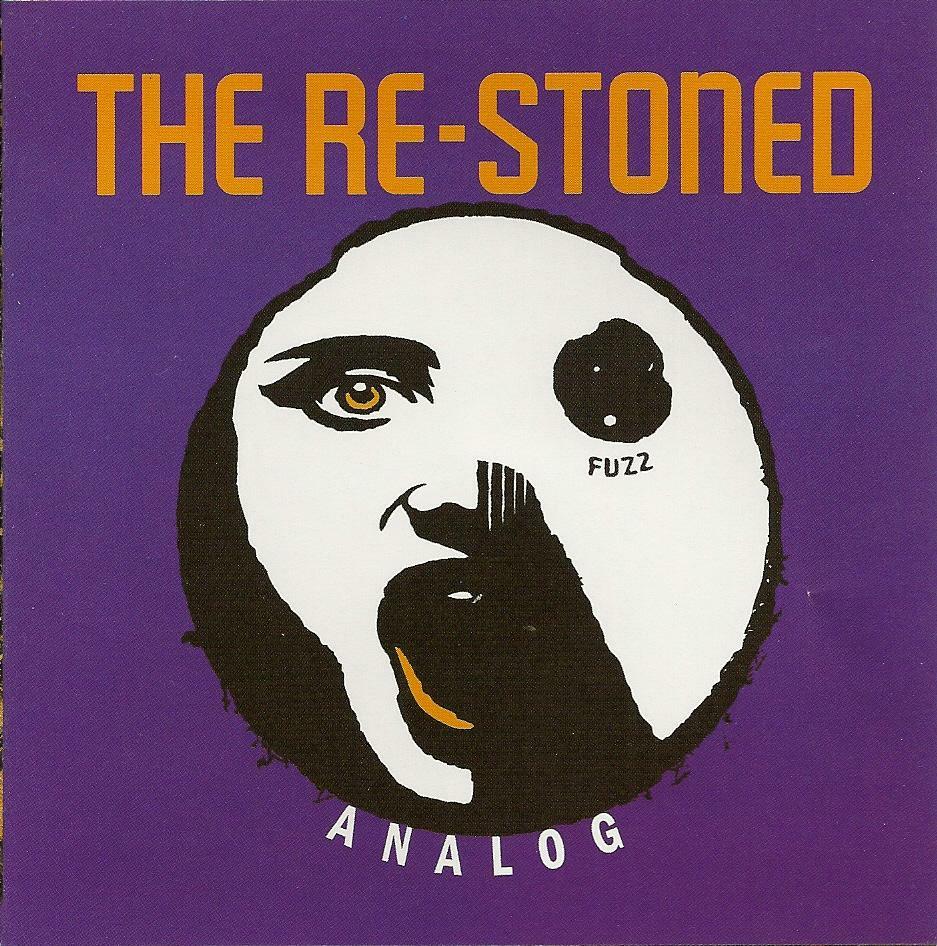 [Ed. note – This review is being posted after the reivew of the most recent Re-Stoned album Plasma.
[Ed. note – This review is being posted after the reivew of the most recent Re-Stoned album Plasma. 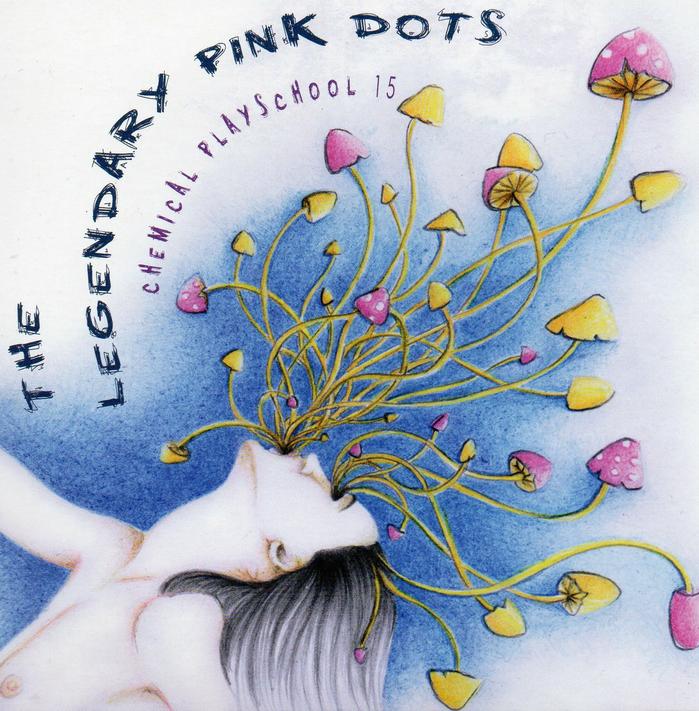 The Legendary Pink Dots are an esoteric underground communal Beatnik collective phenomena and a band I avidly collect and listen to often for the past 15 years, ever since discovering them at a gig in Oslo, a review which can be found in the old index on the old Aural Innovations page, spring 1998 issue. Please
The Legendary Pink Dots are an esoteric underground communal Beatnik collective phenomena and a band I avidly collect and listen to often for the past 15 years, ever since discovering them at a gig in Oslo, a review which can be found in the old index on the old Aural Innovations page, spring 1998 issue. Please 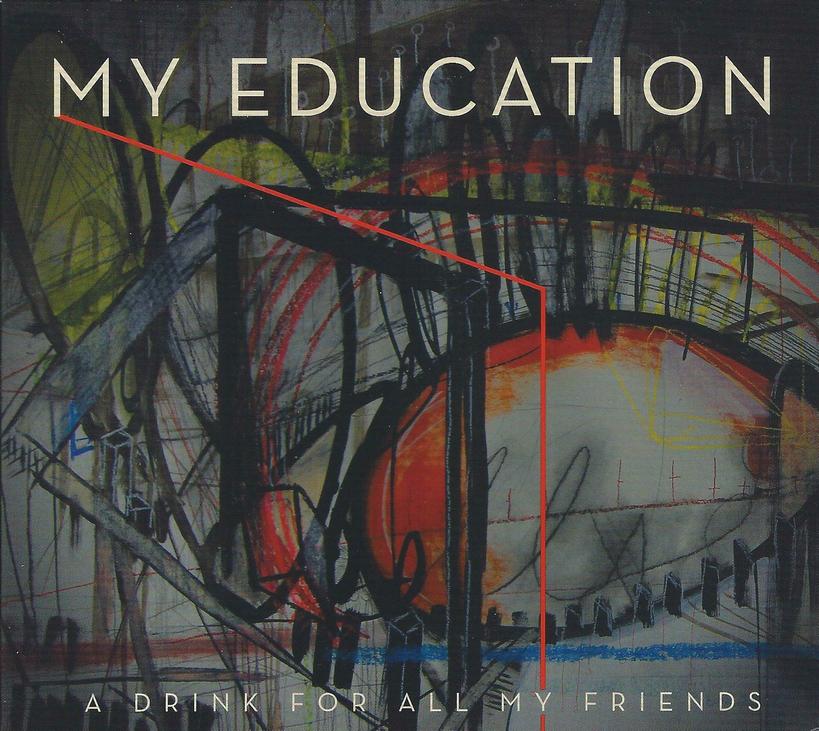 The latest from Austin, Texas based My Education is a set of psychedelically dreamy and cinematic powerhouse wall-of-sound compositions that are all about folk-like serenity and image inducing intensity. The band are the sextet of James Alexander on viola, guitar and programming, Chris Hackstie on acoustic, electric and pedal steel guitars, Brian Purington on guitar Vincent Duncan on drums and percussion, Scott Telles (ST 37) on bass, and Henna Chou on piano, keyboards and cello, plus guests on vibraphone, saxophone and keyboards.
The latest from Austin, Texas based My Education is a set of psychedelically dreamy and cinematic powerhouse wall-of-sound compositions that are all about folk-like serenity and image inducing intensity. The band are the sextet of James Alexander on viola, guitar and programming, Chris Hackstie on acoustic, electric and pedal steel guitars, Brian Purington on guitar Vincent Duncan on drums and percussion, Scott Telles (ST 37) on bass, and Henna Chou on piano, keyboards and cello, plus guests on vibraphone, saxophone and keyboards. This Finnish trio start off the first of four tracks on this CD somewhat slow and droney and meditatively heavy and instrumental in a My Sleeping Karma fashion, but that is only the opener. The accented vocals sound like Dark Sun’s very similar singer as well. Maybe it’s just being Norwegian, Finland is like an strange language with its nasal accentuation and is distant to Scandinavian. If the singer had been female, it may as well have been a spacey Amon Düül II section from the Wolf City album as well. The track in question is called Beneath A Black Star. It seems from the get go this band is related to the weird kraut-goes-Doom stylings with heapings of drone one hears bubbling up with bands like Astra, with the psychedelicized kraut-goes-Sabbath influence. Deserted Planet 2078 is the next track and is a departure being less heavy, with keyboards reminding me of the first Orange Goblin album’s Star Shaped Cloud, but it does not build to a mind-blowing keyboard and lyrical climax like that song does. Its just kind of low key like Astra often do, and the vocals are present. Spacy Phantasy is next and has a vintage slowed down Fly To The Rainbow feel (Scorpions on Brain label!) but soon doomingly meanders into the Rise Above label bands like Astra or early Orange Goblin again, with heavy guitars and keyboard bits. The song gets progressive after 2 1/2 minutes, with more complex and uptempo changes with spacey vocals. Sykli is the last track, of this short album clocking in under 40 minutes, and is sung in Finnish language. It is slow at first and picks up after 8 minutes to a rockier groove.
This Finnish trio start off the first of four tracks on this CD somewhat slow and droney and meditatively heavy and instrumental in a My Sleeping Karma fashion, but that is only the opener. The accented vocals sound like Dark Sun’s very similar singer as well. Maybe it’s just being Norwegian, Finland is like an strange language with its nasal accentuation and is distant to Scandinavian. If the singer had been female, it may as well have been a spacey Amon Düül II section from the Wolf City album as well. The track in question is called Beneath A Black Star. It seems from the get go this band is related to the weird kraut-goes-Doom stylings with heapings of drone one hears bubbling up with bands like Astra, with the psychedelicized kraut-goes-Sabbath influence. Deserted Planet 2078 is the next track and is a departure being less heavy, with keyboards reminding me of the first Orange Goblin album’s Star Shaped Cloud, but it does not build to a mind-blowing keyboard and lyrical climax like that song does. Its just kind of low key like Astra often do, and the vocals are present. Spacy Phantasy is next and has a vintage slowed down Fly To The Rainbow feel (Scorpions on Brain label!) but soon doomingly meanders into the Rise Above label bands like Astra or early Orange Goblin again, with heavy guitars and keyboard bits. The song gets progressive after 2 1/2 minutes, with more complex and uptempo changes with spacey vocals. Sykli is the last track, of this short album clocking in under 40 minutes, and is sung in Finnish language. It is slow at first and picks up after 8 minutes to a rockier groove.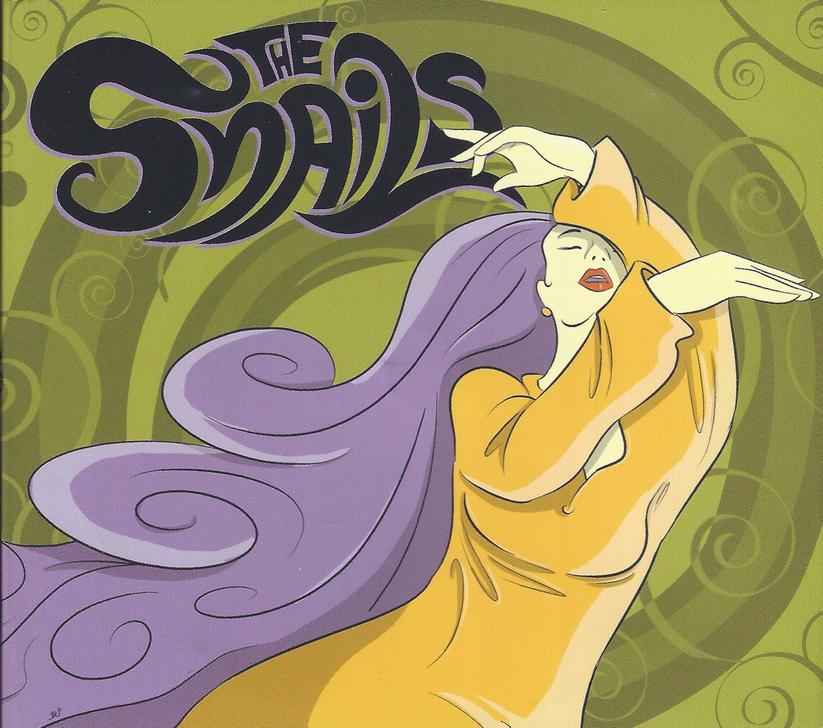 Greece and Italy (or the Mediterraenean in general) seems to be a hotbed for Freakbeat / Garage revival bands since the wave was started by The Fuzztones and The Cynics and a few other US acts who also have toured that part of the world extensively since the early 80’s, and are very popular down there. So what we have is a genre, which in my younger LSD trippin’ art student days, was a favorite of mine, owning The Fuzztones Lysergic Emanations CD, a handful of Bevis Frond CDs (all this bought at the Wild Mind shop in Oslo, R.I.P.) and several “Nuggets” comps (I now have many of the expanded box sets). In the late 80s I was a big fan of The Doors as well. All personal history aside, I’ll get to the point: if you like listening to the same stuff over and over, the snarling vocals, the fuzz guitars, the Farfisa organ, fine, then these two Greek-beat (a new genre?) platters are for you. You probably have all 12″ and 10″ and 7″‘es by The Fuzztones already stashed away with your incense holder, lava lamp, etc., somewhere from last time you had a session at the turntable.
Greece and Italy (or the Mediterraenean in general) seems to be a hotbed for Freakbeat / Garage revival bands since the wave was started by The Fuzztones and The Cynics and a few other US acts who also have toured that part of the world extensively since the early 80’s, and are very popular down there. So what we have is a genre, which in my younger LSD trippin’ art student days, was a favorite of mine, owning The Fuzztones Lysergic Emanations CD, a handful of Bevis Frond CDs (all this bought at the Wild Mind shop in Oslo, R.I.P.) and several “Nuggets” comps (I now have many of the expanded box sets). In the late 80s I was a big fan of The Doors as well. All personal history aside, I’ll get to the point: if you like listening to the same stuff over and over, the snarling vocals, the fuzz guitars, the Farfisa organ, fine, then these two Greek-beat (a new genre?) platters are for you. You probably have all 12″ and 10″ and 7″‘es by The Fuzztones already stashed away with your incense holder, lava lamp, etc., somewhere from last time you had a session at the turntable.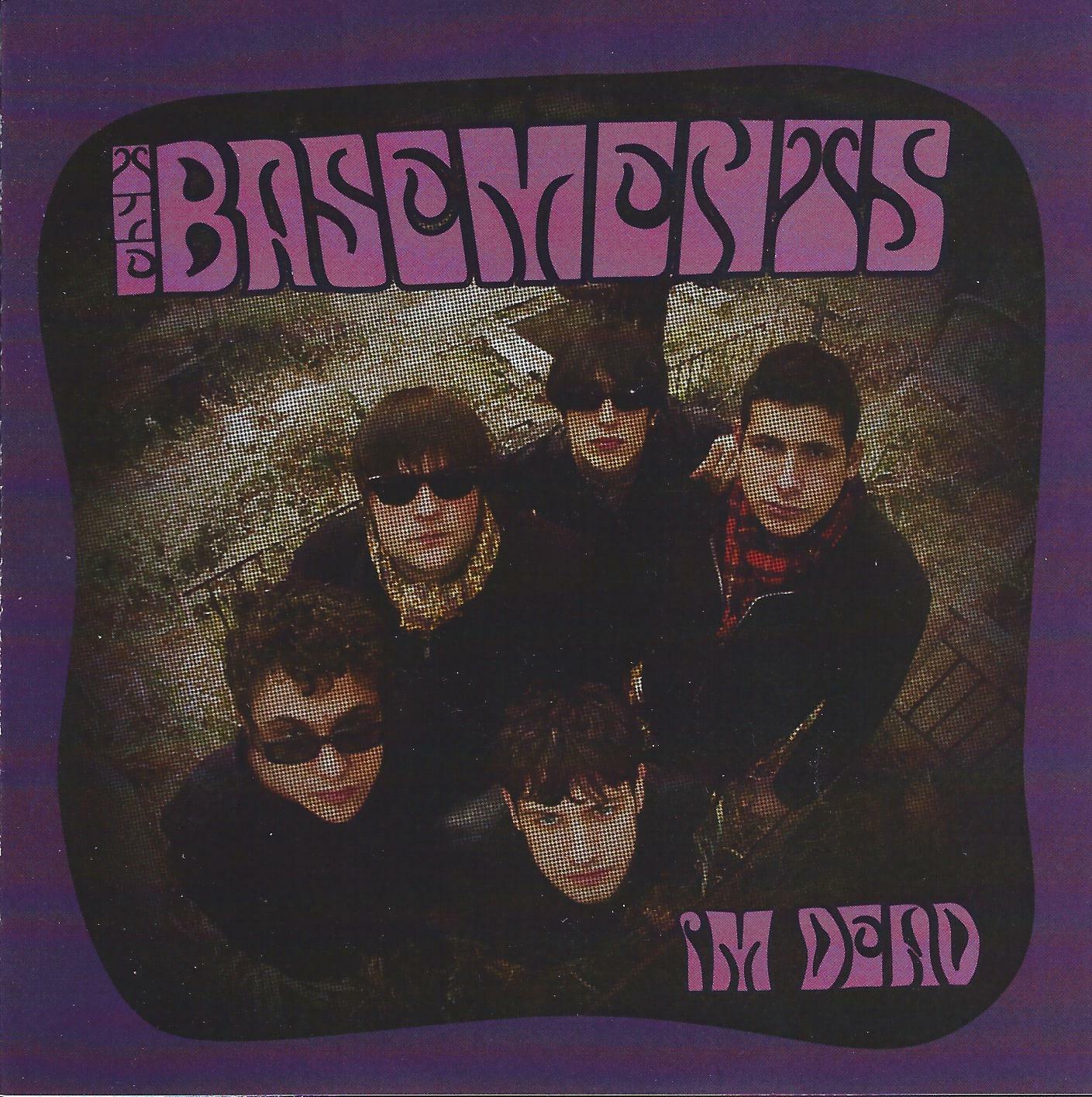 Don’t get me wrong, I adore the 60’s stuff, the innocence of the era (at least the innocent part these bands try to recapture), I have just “moved on”. I sometimes play LA Woman by The Doors, dig out a Yardbirds or Who album or skip through a “Best of The Small Faces” for old time’s sake, delve into bands from the 60’s on occasion, sometimes a quick scan thru of my expensive “Nuggets” boxes once in a blue moon. But doing all this over again, reviving it, it’s fun but it cannot be a valid lifestyle unless you are totally dedicated only to Freakbeat or Garage, which I am not, I am afraid. I love Third Bardo’s I’m Five Years Ahead of My Time and The Snails do it justice. There’s loads of great harmonies to be found on the Basements CD, it’s all nicely done. But revivalism of this genre in 2013 is best left to the original 80’s wave of bands. Its not bad at all, if you dig the Fuzztones in a hardcore way, please do pick up these two CDs, you’ll think they are fuckin’ great. But if you, like me, feel like the 60’s were more than just Strawberry Alarm Clock or The Seeds and frankly, burned out on drugs and Nuggets albums by the time you were 25, explored new worlds, maybe went a little insane on harder drugs and evolved into a reptile-like humanoid, and found you preferred other genres than 60’s revivalism, don’t bother. To me, who likes all kinds of rock music made between 1962-2013, I feel a kinship to the Freakbeat and Garage revival, though I let it be an obscure part of my musical hereditary makeup, although these bands are both very good at what they do… But it’s just not my cuppa… so to speak. Onward to Fuzz!
Don’t get me wrong, I adore the 60’s stuff, the innocence of the era (at least the innocent part these bands try to recapture), I have just “moved on”. I sometimes play LA Woman by The Doors, dig out a Yardbirds or Who album or skip through a “Best of The Small Faces” for old time’s sake, delve into bands from the 60’s on occasion, sometimes a quick scan thru of my expensive “Nuggets” boxes once in a blue moon. But doing all this over again, reviving it, it’s fun but it cannot be a valid lifestyle unless you are totally dedicated only to Freakbeat or Garage, which I am not, I am afraid. I love Third Bardo’s I’m Five Years Ahead of My Time and The Snails do it justice. There’s loads of great harmonies to be found on the Basements CD, it’s all nicely done. But revivalism of this genre in 2013 is best left to the original 80’s wave of bands. Its not bad at all, if you dig the Fuzztones in a hardcore way, please do pick up these two CDs, you’ll think they are fuckin’ great. But if you, like me, feel like the 60’s were more than just Strawberry Alarm Clock or The Seeds and frankly, burned out on drugs and Nuggets albums by the time you were 25, explored new worlds, maybe went a little insane on harder drugs and evolved into a reptile-like humanoid, and found you preferred other genres than 60’s revivalism, don’t bother. To me, who likes all kinds of rock music made between 1962-2013, I feel a kinship to the Freakbeat and Garage revival, though I let it be an obscure part of my musical hereditary makeup, although these bands are both very good at what they do… But it’s just not my cuppa… so to speak. Onward to Fuzz!